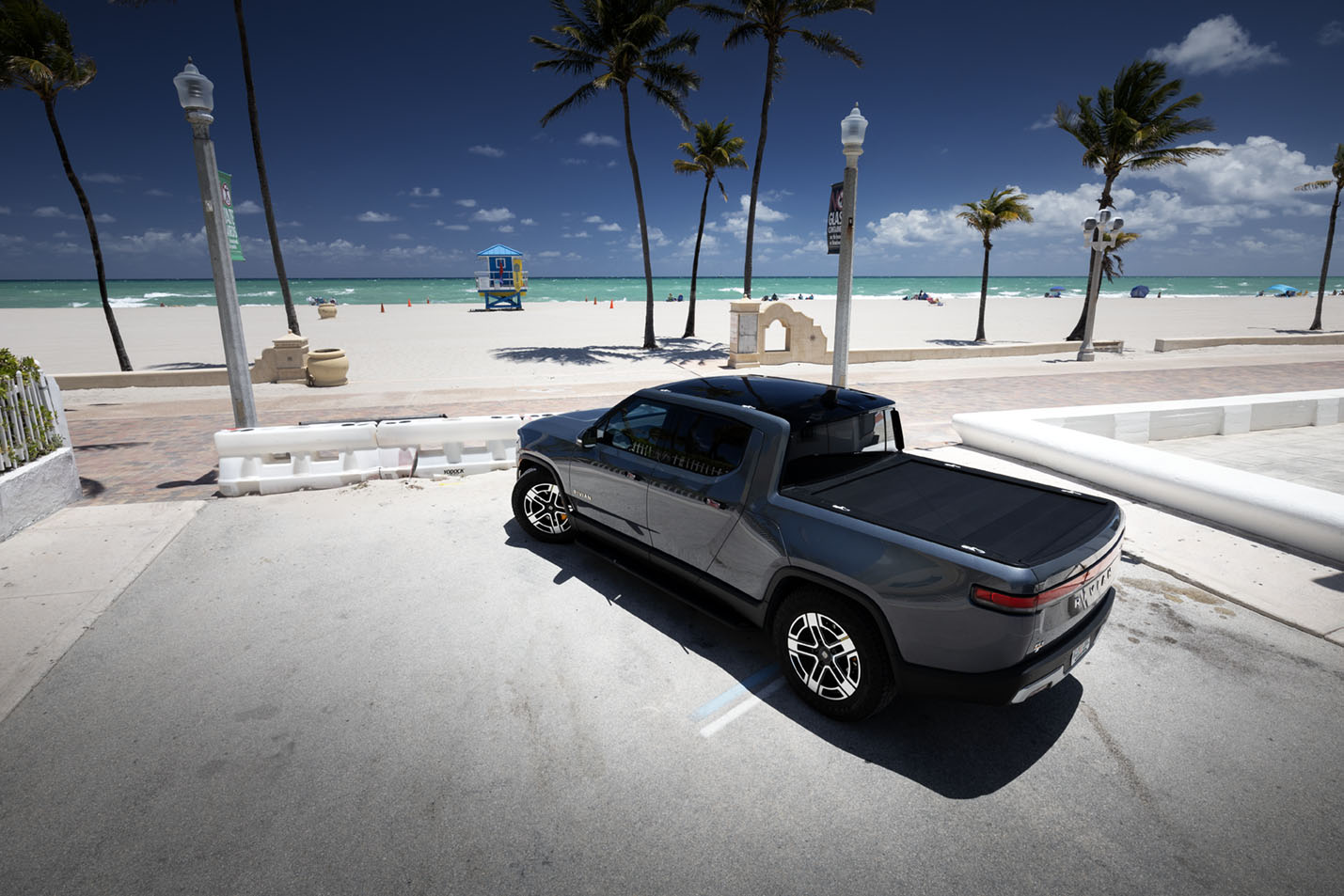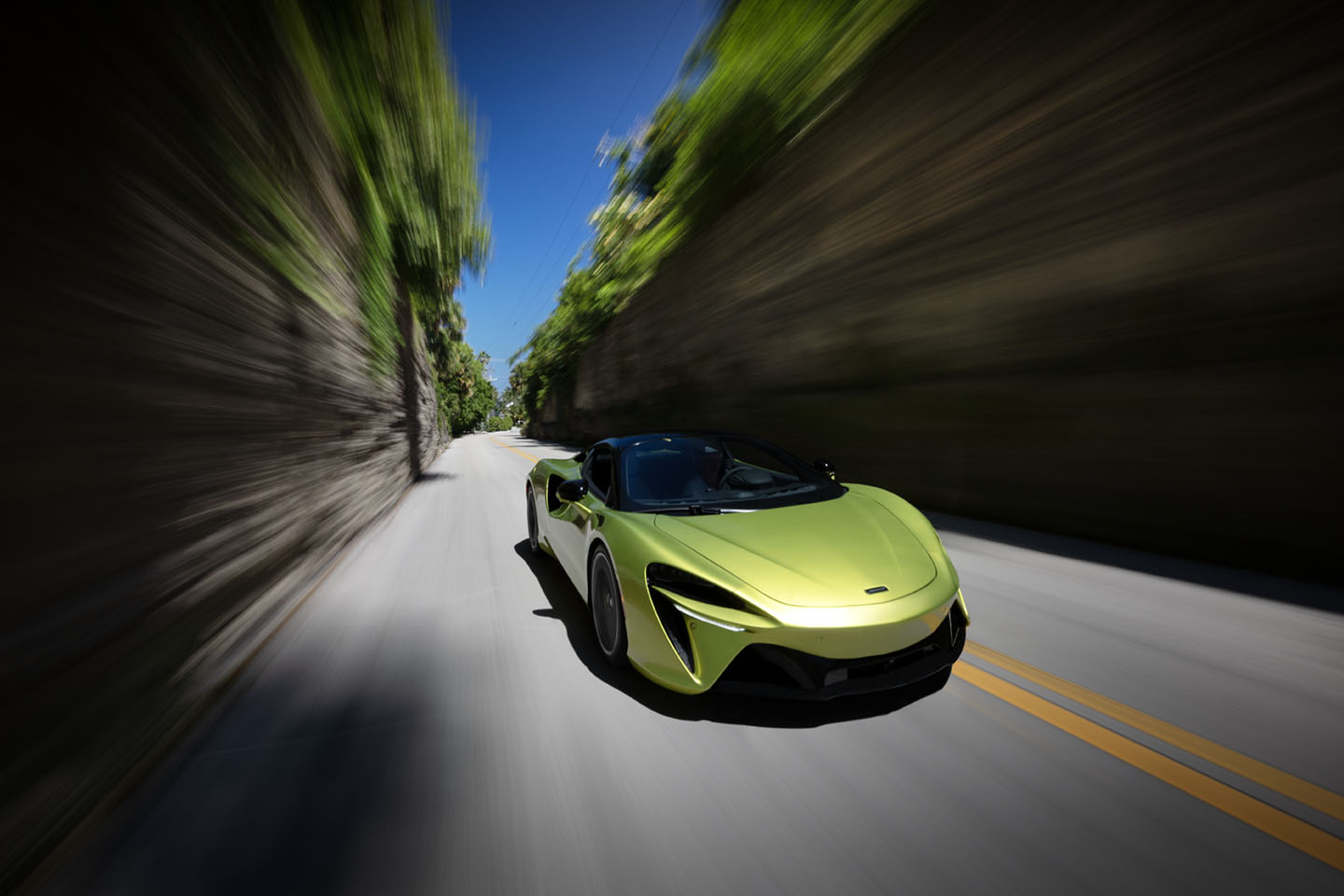
The article was originally produced on October 23, 2012, some facts and prices may have changed since then.
Volkswagen Golf
How can a car model repeatedly overwhelm the world with its simple language. Join the Cars Collection to Sardinen where the first test of the seventh generation Golf took place.
In 1974, something happened that would change the automotive industry forever. Volkswagen built its first Golf. A car model that gave a whole class its name, the Golf class. The model was intended to be, for a reasonable price, a simple car for both young and old. That is exactly what has made it so successful and loved worldwide. Like other Volkswagen models such as Passat and Scirocco, the name is taken from well-known natural phenomena. The name Golf comes from the Gulf Stream. Since the first Golf from 1974, seven generations have now been released. All have been sales successes and raised the standard for the class as well as taking Volkswagen to the profitable company it is today. Now is the time for the Golf VII to once again push forward the limits of technology and efficiency in the class. The orange colors of the Swedish autumn have been replaced by emerald-coloured coasts on the Italian island of Sardinia. Here, the test of the new Golf will take place, to which the Cars Collection is invited.

Why the pulse does not shoot through the roof at first eye contact with the new Golf is not surprising. Volkswagen has never tried to seduce its buyers with bold new lines. With a simple and tight line choice, these cars remain relatively timeless compared to competing brands. If you put all seven generations of Golf next to each other, the similarities are striking. The clear shape of the C-pillar is one of the identity lines that has been with the first version and is increasingly marked out. Just like all other cars, the Golf also grows in its suit. Both the length, width and wheelbase have become larger. This naturally contributes to more comfort and better behavior on the road. The cargo capacity has increased by thirty liters from the previous model. Thanks to a new platform type called MQB (Modular Transverse Matrix), for transverse engines, a lot of space in the front carriage has also been freed up. The result is better cabin space. Another thing that also affects the driving experience, and above all the consumption, is the weight. The engineers in Wolfsburg have managed to lose a whole hundred kilos. The interesting thing is that these kilos are not only found in larger components such as the body and engine. The electrical system has also been reduced by six kilos.
To really make the Golf a leader in its class, Volkswagen has spared no expense. The safety systems are rigorous with, among other things, belt tensioners, automatic closing of windows and systems that make the car prepared in the event of any accidents. These are systems that are normally only found in cars in the premium segment. Among the driver assistance systems, we also find technology solutions that are also usually found in more luxurious models. Cruise control that automatically maintains a distance, even at crawling speed when driving in queues, lane keeping assistance and automatic high beams are just some of the range of convenient assistance systems for the driver. The infotainment system has also received an upgrade. Google maps is of course integrated into the large nav. The screen now works just like a smartphone where you shrink and enlarge the map. By pinching or dragging with two fingers. In other words, the new Golf is packed with the latest in automotive technology.

Let's forget all the new technology for a moment and focus on the driving experience. The sardine is filled with fantastic winding roads with perfect asphalt. An optimal environment to see how the new Golf behaves. The first thing you notice is the silence. Certainly the asphalt is beyond the quality of our Swedish roads. But it's not the lack of wheel noise that strikes you. When the speed gets well over the hundred mark, wind noise from rear-view mirrors is still completely absent. There is such a silence in the cabin that cars like the Audi A8 and Mercedes S-Class feel right to be compared with. Even the motor is extremely quiet despite the relatively high speed.

The range of engines for the new Golf is wide. CS Life chose to test two versions. Partly the large petrol engine with manual gearbox and the small petrol variant with DSG gearbox. The interesting thing about the big engine is that Volkswagen added the function ACT (active cylinder deactivation). At low revs and quiet driving, the engine shuts down two of the four cylinders. The results are reduced consumption. When driving, this happens completely silky smooth and the only thing you experience is that the sound of the engine changes slightly. As soon as you give a little more gas, the engine wakes up and you have a full power range. The system is only available on the 140 horsepower TSI engine and will initially not be available on the Swedish market. Something that will most likely change when sales start in the spring of next year. Engine number two for testing was the small petrol engine with 85 horses and DSG box. Despite low power, the engine is experienced as rapping and not tired at all. With the dual clutch box, this becomes a nice combination that should attract many buyers. Both engine versions have a consumption of a low 4.9 liters per mile. On the three other engine options, we find a 105-horsepower diesel that falls below the four-liter mark. The Bluemotion version that runs on ethanol can be reduced to 3.2 liters in mixed driving. Later there will also be a gas version as well as four-wheel drive and a combi version. A Gti and R model are of course also planned.

Once again, Volkswagen succeeds in pushing the boundaries of what is possible. The new Golf is a style study in quality, comfort, efficiency and economy. The odds that the new Golf will not become a bestseller feel quite low. With a product this good, it is easy to understand that Volkswagen is making a profit. But the winner in this case is the one who buys a Golf. Finding something bad about this car will be difficult. That's exactly how the perfect car should be experienced.
+ Fantastic comfort. Filled with new technology. Relatively cheap.
- In the short term, the forms do not challenge and can initially feel tight and boring.
VW Golf VII
| Basic price | SEK 169,900 |
| Engine | 1.2-liter four, 85 hp. Torque 160 Nm |
| Transmission | 6-speed DSG gearbox, rear wheel drive |
| Acceleration | 0-100 in 11.9 sec |
| Top speed | 179 km/h |
| Fuel consumption mixed driving according to the manufacturer | 4.9 l/100 km |
| Weight | 1,205 kg |
| Guarantees | 2-year new car, 12-year rust, 3-year carriage damage warranty |
| Web | www.volkswagen.se |
| Grade | 4 |




